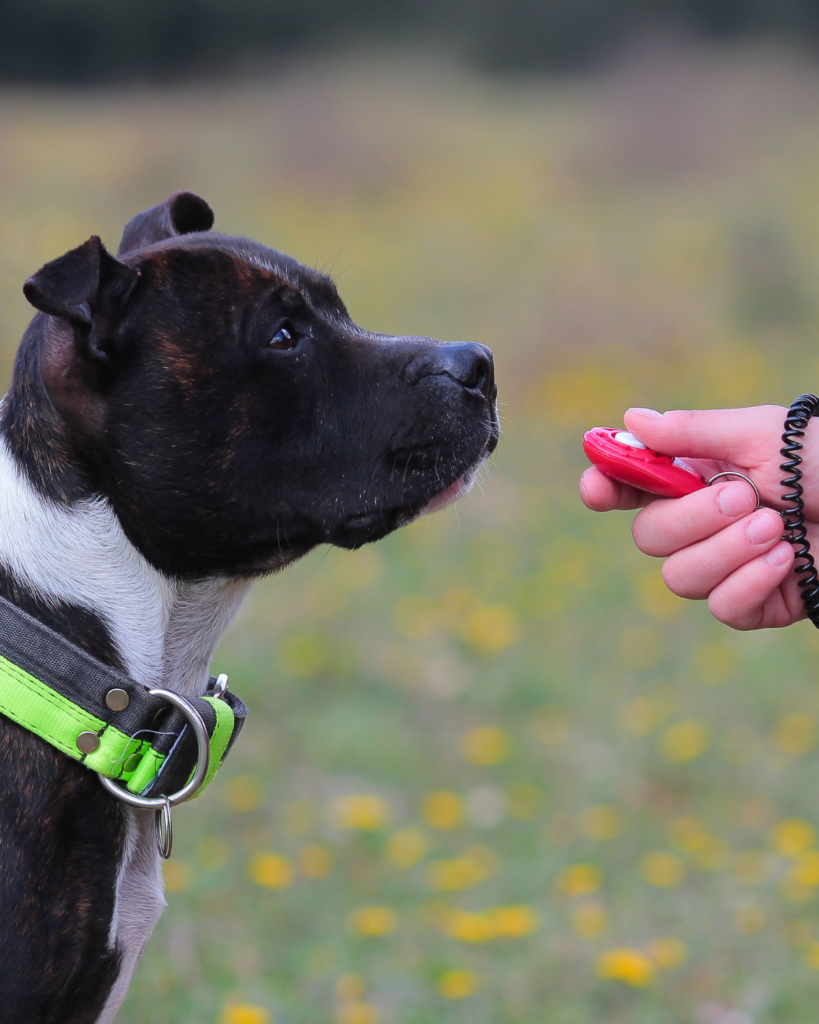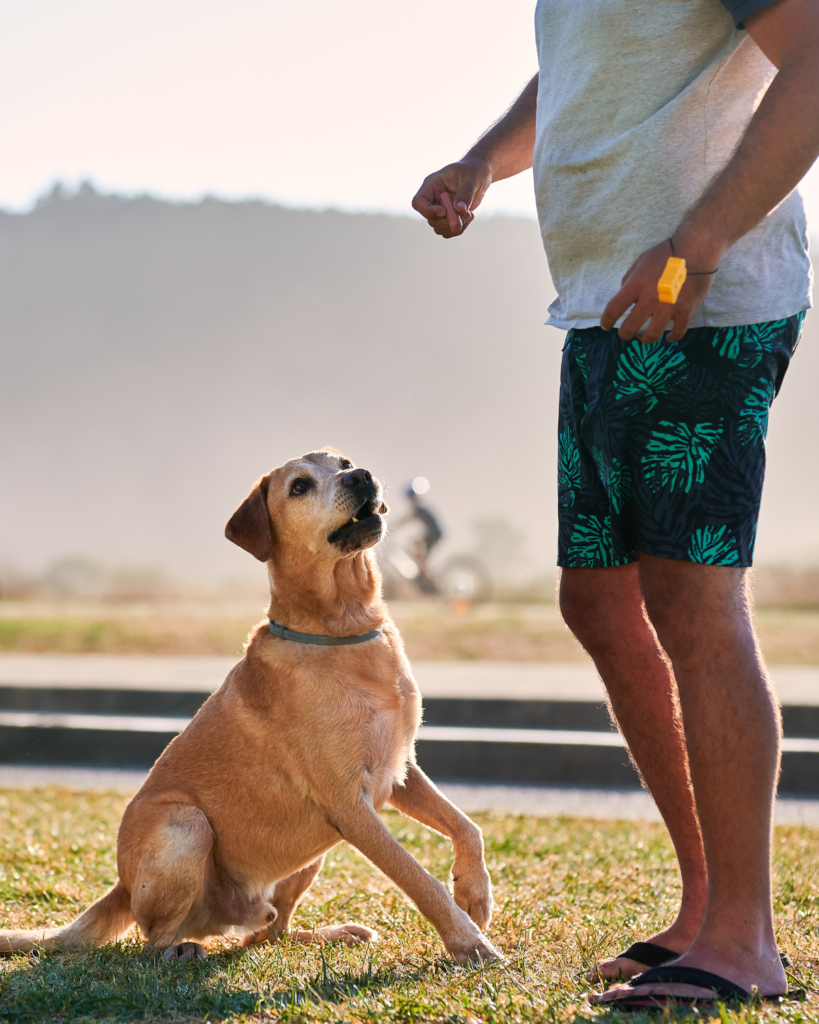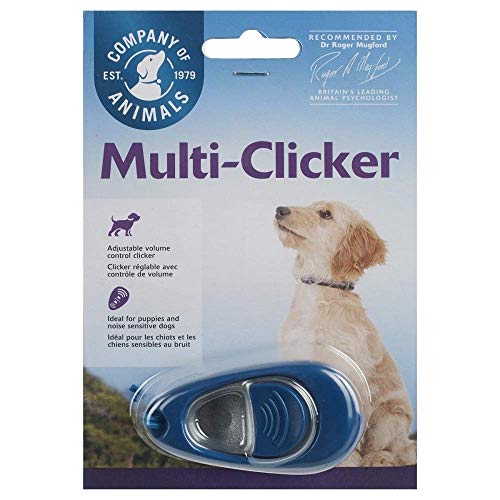Clicker training vs marker word; what’s more effective? 2024
By admin / January 11, 2024 / 4 Comments / Uncategorized
So you want to train with positive reinforcement, but do you want to use a clicker, or a marker work?
If you’re venturing into the world of positive reinforcement training (Great choice! Did you know it increases optimism in your dog[5]?, it might be a case that you’ve stumbled across clicker training, and you’re wondering why you might use it, or not use it. Or, you’re struggling with marker based training and you’re wondering if clicker training might make you more efficient!
I feel you! As a dog mom (before I was a trainer) this was very much something I debated too. But now, as a trainer, I want to take a minute and discuss with you why you may want to choose one school of thought over the other. Should we be opting towards clicker-trained dogs? Is it the right form of training? Is it easier? Is it quicker?
https://doi.org/10.1016/j.jveb.2020.07.005
It’s also good to note that whilst I’m trying to make this as friendly as possible to read, there is some science involved, so it may be a little much, if so, skip down to the conclusion!
The difference between the methods is solely what we use to tell our dog they’ve done the right thing – other than the process is identical.
e.g. the learning process is simply;
Verbal command (or visual cue) > Positive Dog Response (i.e. correct position) > Click/mark > Increase the likelihood of your dog repeating the action correctly in the future.

What Is A Clicker?
A clicker is a small, palm size device (requiring no batteries) that pings a piece of metal within it at the press of a button, and creates a noise, a relatively unique noise that clicks. This unique sound (something like the click of a ballpoint pen) is what the clicker trainers want to capitalize on, believing that this marker being so unique and consistent refines the process.
Inherrently, this noise is entirely meaningless to your dog (or pet), however, proper use of a clicker will result in your dog associating the clicker with the prediction of food, making it signal to your dog (or pet) that they’ve done the correct thing, and that good things are coming.
Food rewards (e.g. small pieces of chicken or other high value treats) are used to be the positive reward typically, but you can also use play, affection, or even smells!
The clicker then becomes classically conditioned, aka a Pavlovian response.
What Is Clicker Training?
In the early 2000’s, clicker training was popularized by Karen Pryor (founder of the Karen Pryor Academy, and author of many books on the subject), as an incredibly effective way of training your dog, and is something that often gets branded as the “most efficient” way of training, supposed to decrease the length of time it takes for your dog to learn new things, and to help them retain things better by decreasing the natural variation we humans use when priasing our dogs.[4]
The premise is that we “Charge” the clicker by showing our dogs that when a click happens, a reward will come momentarily (sometimes referred to as a bridge or bridging stimulus by dog trainers). The reliability and predictability of this is used to shape new behavior, and reward good behavior.
The clicker is then used with consistency and then a verbal cue (or hand signal) will be taught effectively and efficiently.
Pros
- Consistent sound
- Easily Transferable
- Hones timing
- Reward based training
Cons
- Extra piece of gear
- Can be aversive
- Easy to misplace
- Requires practice
What Is A Marker Word?
Simply put, your marker word is the same as praise.
It is a verbal marker, such as “Good girl!”, “Yes!” or “Good dog”, your verbal reward marker is used during your training session at the exact moment your dog does the correct thing and you then add in a food reward which encourages the desired behavior. The food is something we’d technically refer to as a primary reinforcer (as dogs need food, and we’re providing them a sample of that, eventually, when a cue is reinforced sufficiently, the action can become reinforcing, this would be a secondary reinforcer).
Pros
- Easy to use
- Easy to handle
- Hones timing
- Reward based training
What Marker Word Should I Use?
Whatever comes naturally, usually, when we start training, I encourage my puppy parents to pick one cue, and stick to it really well, because it helps get them in a habit! But, as your dog grows, typically you end up using more than one marker word (and it still works!). Personally, I use “Yes!” And “Good!” done with different pitches and tones depending on what I’m trying to achieve, because tone is quite important, e.g. if I’m rewarding calmness, I’m going to use a calmer tone, vs when I’m trying to excite a recall? That’s going to have far more energy.

How Do Clickers Vs Marker Words Compare? What Does Research Say?
Early research suggested there was as much as a 60% increase in efficacy when a clicker was used [4], however, the more science has been able to conduct tests on clicker training as a method, the more skepticism seems to be being case.
Science’s current opinion is that there is no significant difference between auditory cues [1,2,3]
“…point toward no advantage in favor of the shaping method using one acoustic signal over another. Moreover, at best the allegedly beneficial effect of clicker would seem to be rather small” Chiandetti, 2016.
“the use of a clicker did not improve training progress or the rate of training for either behavior trained in this study.” Dorey, 2020.
So, scientifically, they’re both roughly equally likely to result in the same learning speed, meaning neither one is more effective than the other. Future studies have been encouraged by the scientific community to investigate the finer points of clicker training, and it’s efficacy in animal training.
Consequently, I would leave this up to you, as dog owners. If you want to use it and it facilitates you, as an individual, training your dog with a clicking sound? Do it! If not? Don’t.
Regardless of what science says, there is also the you factor. Clicker training is rarely aversive*, and if it becomes a great way for you and your dog to train, that’s fantastic! However, you should not feel pressured to clicker train over using a marker word because there are no statistically significant differences.
*Aversive meaning uncomfortable or unpleasant for your dog, as sometimes the sharp click noise can be something sensitive dogs find to be too much.

The Big Problem With Both Methods
The single biggest struggle with both clicker training and marker word use is that a pet parent takes time and practice to get the right time for this signal.
Timing takes practice, it takes a certain level of skill, and it’s something that is actually usually the reason for training problems, and this may be the possible explanation as to why some people believe clicker training is more effective than the marker training concept, because clicker training puts a real emphasis on timing – where as when we’re just saying “Good boy!” sometimes we leave it too late because of our instinct, or give our food treats before we use our marker word.
My personal stance;
To me, if there’s no difference, don’t complicate it.
I was raised with a “Keep It Simple, Stupid” approach, and it’s hard to forget your own voice! The biggest issue with marker words is using the same word consistently.
But even then, it’s not a significant difference in training value, and only make it more difficult to handle when you’re trying to walk a large, reactive dog and pull things from a treat pouch.
In summary
Use what works. I’d you’re struggling to say consistent with your words, trying a clicker can’t hurt! But be aware that you will see some regression if you’ve already started training.
Or, if you don’t want to, don’t! Tighten up your marker word usage and go from there.
I’m a thorough believer in making dog training as simple as possible to encourage you to do it more! Keep training in short sessions, keep making training fun, and keep training!
If you need help in training your dog, Head to my store where you can book an appointment!
No! That’s a whole different thing, I’ll get to that in another article, because a cue (or command) is a cue! Dogs read verbal and visual cues roughly equally. And in my experience? It wholly depends on the dog. For example, I am lucky enough to own two littermate dogs – Shelby & Lucy who are coonhounds! Now, they’ve got similar genetics, they’ve been raised the same, and the environment has been uniform throughout their lives – so the main variable is the dog herself! Oddly enough, Shelby responds more truly to hand signals, whilst Lucy is better with verbal cues.
This leads me to believe that dogs, just like humans, learn in unique ways depending on what suits them best – but please be aware there is no science behind this one! It’s just a conclusion I’ve drawn over years of training.
What Cue Should I Use?
A cue or command should be short and unique, beyond that, you can use german words, you can use the sound of the whistle to train recall, you can use animal names if you like!
However, for the most natural, seamless application of cues, I’d choose a word you’d naturally use whilst focusing on a low syllable word like “Down”, “Paw”, “Outside” or “Come”
What About Bad behaviors?
Clicker or marker training isn’t necessarily designed to discuss or remedy ‘bad’ behavior, but to promote good behavior to achieve better results and overall better your dog’s behaviour. This works on something called “Positive reinforcement” or “Force free” training that is centered on the idea that we promote good, and ignore or reduce the opportunity for the wrong thing to happen, which a recent study has shown creates and fosters optimism in dogs[5], and is widely supported as the best overall method of training dogs.
Citations
[1] Cinzia Chiandetti, Silvia Avella, Erica Fongaro, Francesco Cerri (2016). Can clicker training facilitate conditioning in dogs? Applied Animal Behaviour Science, 184, 109-116. http://dx.doi.org/10.1016/j.applanim.2016.08.006
[2] Nicole R. Dorey, Alexander Blandina, Monique A.R. Udell, (2020). Clicker training does not enhance learning in mixed-breed shelter puppies (Canis familiarise). Journal of Veterinary Behavior, Volume 39, Pages 57-63,
[3] Pfaller-Sadovsky, Nicole, Camilo Hurtado-Parrado, Daniela Cardillo, Lucia G. Medina, and Susan G. Friedman. (2020). What’s in a Click? The Efficacy of Conditioned Reinforcement in Applied Animal Training: A Systematic Review and Meta-Analysis. Animals 10, no. 10: 1757. https://doi.org/10.3390/ani10101757
[4] Wood, Lindsay, (2008). Clicker Bridging Stimulus Efficacy. Clickertraining.com. https://www.clickertraining.com/node/1960
[5] Casey, R.A., Naj-Oleari, M., Campbell, S. et al. (2021) Dogs are more pessimistic if their owners use two or more aversive training methods. Sci Rep 11, 19023. https://doi.org/10.1038/s41598-021-97743-0
[6] Dickmann, Jana, et al. 2022. “Clicker Training Mice for Improved Compliance in the Catwalk Test” Animals 12, no. 24: 3545. https://doi.org/10.3390/ani12243545
References
Stanley Coren. (2017). Is Clicker Training the Most Effective Way to Train Dogs? Psychology Today. https://www.psychologytoday.com/intl/blog/canine-corner/201704/is-clicker-training-the-most-effective-way-train-dogs
Feng, L.C., Howell, T.J., Bennett, P.C. (2016) How clicker training works: Comparing reinforcing, marking, andbridging hypotheses Applied Animal Behaviour Science 181: 34-40,
Pryor, K. 1999. Don’t shoot the dog! The new art of teaching and training. 2 ed. Bantam Books, New York,
Skinner, B.F. 1938. The behavior of organisms: an experimental analysis. England.
Author, Ali Smith
Ali Smith is the Positive Puppy Expert, dog trainer and is the founder of Rebarkable. She is passionate about helping puppy parents get things right, right from the start. To help create a puppy capable of being a confident and adaptable family member and keep puppies out of shelters.
Ali has won multiple awards for her dog training, and has had her blog (this blog!) rated as 2021 & 2022 worlds’ best pet blog!
Thanks to depositphotos.com for the images!
Views: 0
Trending
4 thoughts on "Clicker training vs marker word; what’s more effective? 2024"
Comments are closed.




Thanks for posting. I really enjoyed reading it, especially because it addressed my problem. It helped me a lot and I hope it will help others too.
May I request that you elaborate on that? Your posts have been extremely helpful to me. Thank you!
Your articles are very helpful to me. May I request more information?
Thanks for your help and for writing this post. It’s been great.